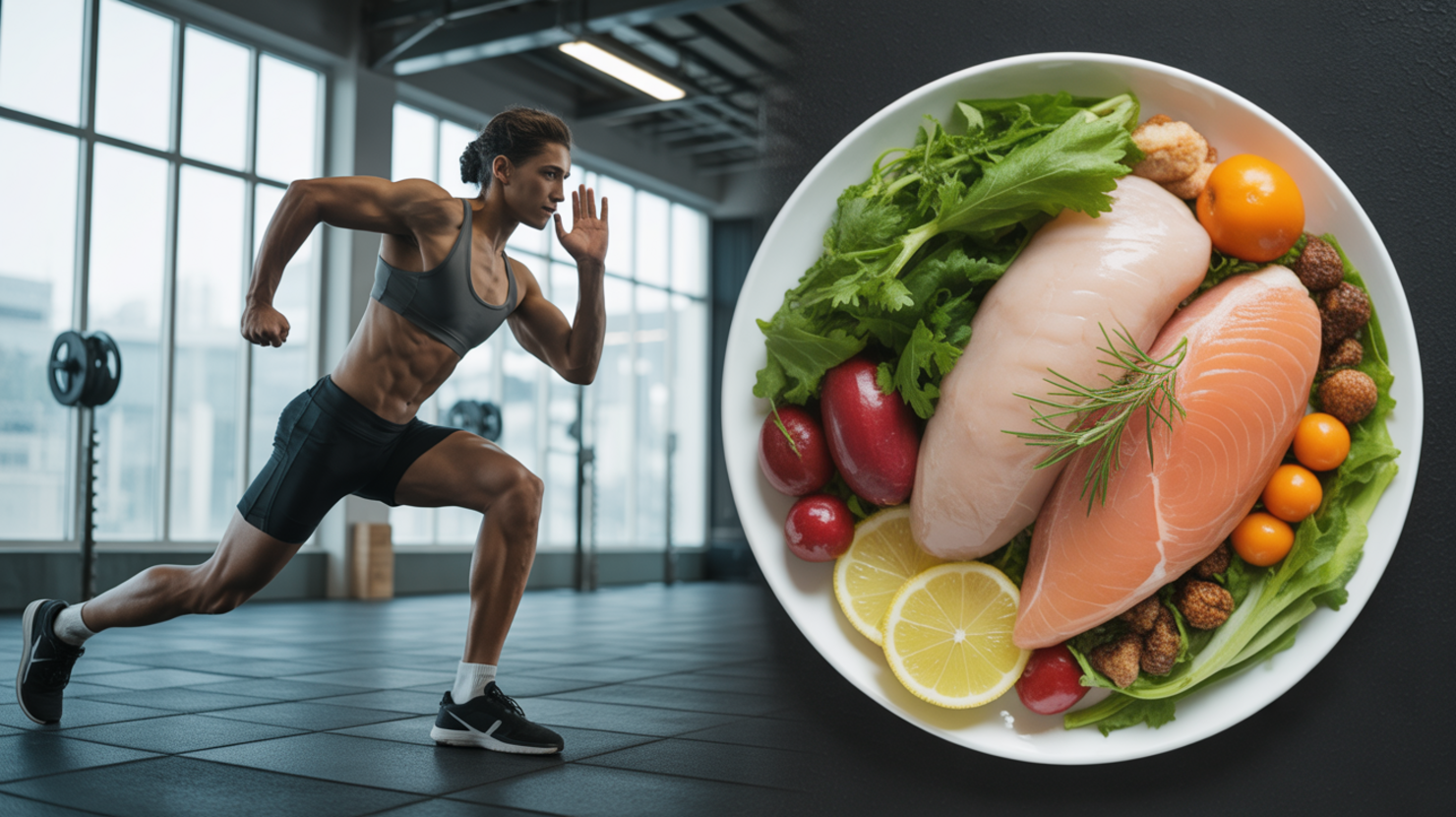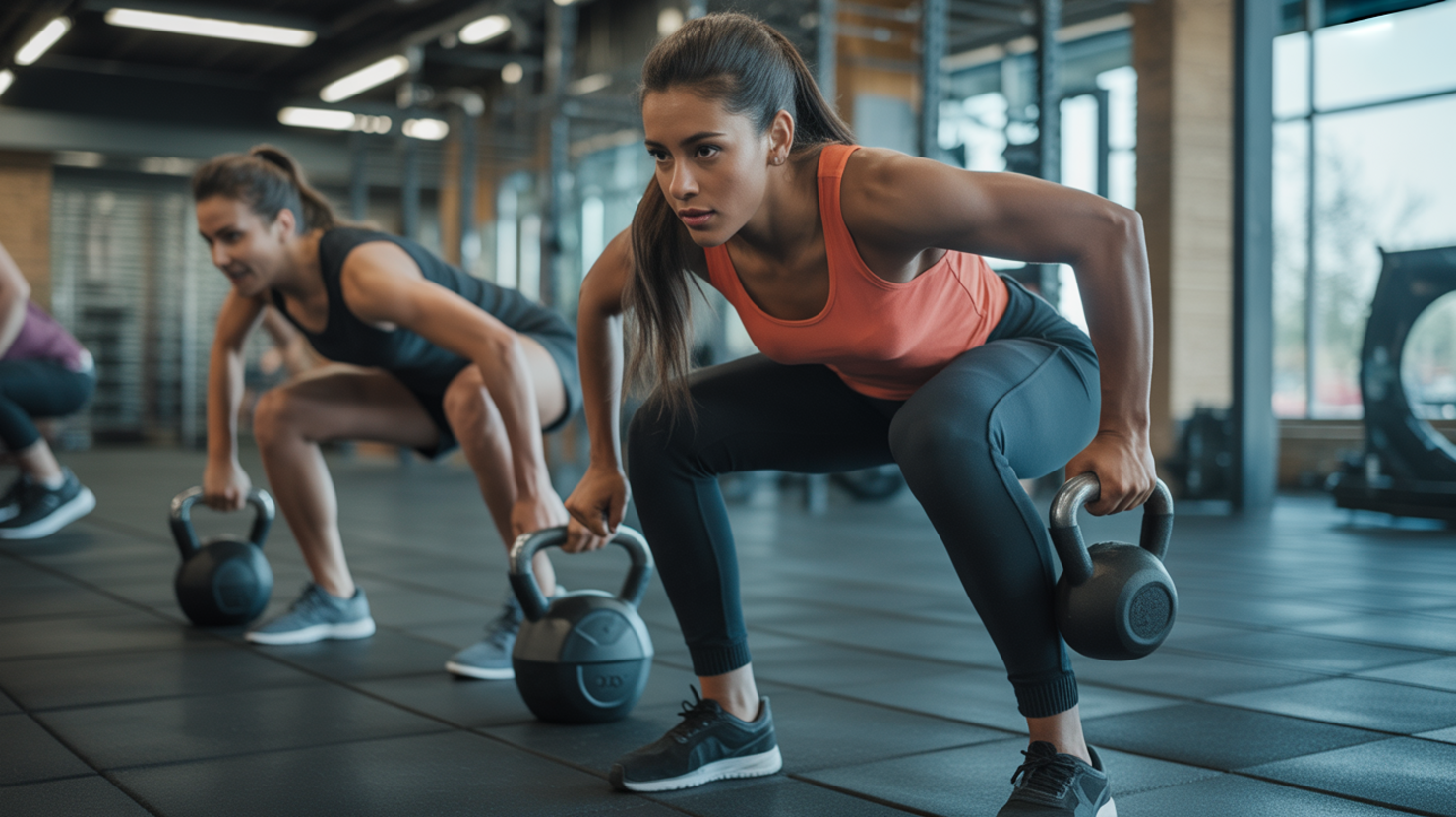Traditional Chinese Medicine (TCM) may seem like a modern trend in Western wellness, but its principles for health and recovery have been refined over thousands of years. Long before modern sports science, ancient practitioners understood the critical link between physical exertion and the body’s need for efficient recuperation. This understanding wasn’t confined to treating illness; it was deeply integrated into the training regimens of disciplines like martial arts, where peak performance and rapid recovery were matters of survival and mastery.
Historically, various herbal preparations were utilized to enhance endurance during demanding training and to accelerate healing afterward. These practices were born from a holistic view of the body, where energy flow (“Qi”) and blood circulation were considered paramount. TCM theory posits that robust Qi and smooth blood flow are essential for nourishing tissues, removing metabolic waste, and facilitating the natural repair processes needed after intense physical stress, such as that experienced by martial artists or, in a modern context, bodybuilders. Disruptions in Qi or blood circulation were believed to impede recovery and increase susceptibility to injury.
Evidence of these ancient recovery protocols can be found scattered throughout early sports medicine texts and martial arts manuals. These writings, though different in language and context from modern scientific literature, describe methods for improving recovery times, strengthening tendons and bones, and managing the fatigue and discomfort associated with rigorous physical training. They highlight a long-standing tradition within TCM of addressing the body’s needs under duress, providing a foundational perspective on how natural methods were historically employed to support athletes long before the advent of modern supplements and recovery techniques. Understanding these roots provides a rich historical backdrop for exploring how TCM principles might complement contemporary approaches to bodybuilding recovery. For more on the history and principles of TCM, you can visit resources like the National Center for Complementary and Integrative Health.
Modern Bodybuilding’s Recovery Gap Analysis
In the demanding world of modern bodybuilding, the focus often intensely zeroes in on maximizing muscle protein synthesis through precise nutritional timing and specific macronutrient ratios, particularly protein. While undeniably crucial for muscle growth, this approach sometimes overlooks other vital components of effective recovery. Merely stimulating protein synthesis isn’t the whole picture; the body also needs to efficiently clear metabolic waste, manage inflammation, restore tissue integrity, and replenish energy stores. This narrow focus can leave a significant “recovery gap” that hinders optimal adaptation and long-term progress.
Another prevalent strategy involves the frequent use of Non-Steroidal Anti-Inflammatory Drugs (NSAIDs) to combat post-workout soreness. While offering temporary pain relief and reducing acute inflammation, research indicates that the widespread or chronic use of NSAIDs might present significant tradeoffs for long-term tissue regeneration. Inflammation, in its initial phase, is a necessary part of the repair process, signaling the body to clean up damaged cells and initiate rebuilding. By suppressing this process too aggressively, NSAIDs could potentially interfere with the intricate biological signals required for robust muscle repair and adaptation, creating a scenario where short-term comfort is prioritized over optimal long-term recovery.
This is where the holistic perspective of Traditional Chinese Medicine (TCM) offers intriguing potential. Rather than simply suppressing symptoms, TCM views inflammation not just as a local issue but often as a manifestation of systemic imbalance or impaired circulation. TCM strategies often aim to support the body’s innate ability to manage inflammation through enhancing blood flow (Qi and Blood circulation), strengthening vital energy, and restoring harmony to physiological processes. This different perspective on inflammation management could potentially provide alternative or complementary approaches to support the body’s natural healing mechanisms in a way that modern methods, focused purely on symptom suppression, might not. Exploring TCM’s potential could offer new avenues for bodybuilders seeking more comprehensive recovery solutions.
Key Herbal Allies for Muscle Regeneration
Beyond conventional supplements, Traditional Chinese Medicine (TCM) offers time-tested botanical support for recovery. This approach focuses on enhancing the body’s intrinsic ability to repair and adapt after strenuous exercise by improving circulation, modulating inflammation, and balancing stress responses. Integrating specific herbs, with historical use and growing modern research, can significantly aid muscle regeneration for bodybuilders.
Here are some potent herbal allies recognized in TCM for their recovery benefits:
- 🌱 Astragalus (Huang Qi): Intense training can strain the immune system. Astragalus is traditionally used to strengthen defensive energy (Wei Qi). Research indicates its polysaccharides can help modulate immune responses, potentially mitigating exercise-induced immune suppression. This helps the body prioritize muscle repair. Studies on Astragalus and immunity support its role during peak training.
- 🌱 Danshen (Salvia miltiorrhiza): Efficient nutrient delivery and waste removal are vital for recovery. Danshen is prized for invigorating blood circulation. Its compounds enhance microcirculation and possess anti-inflammatory properties, promoting faster nutrient transport, quicker waste clearance, and potentially reducing recovery time. Research highlights Danshen’s circulatory benefits for muscle recovery.
- 🌱 Rehmannia root (Di Huang): Strenuous exercise elevates cortisol, which impedes recovery. Rehmannia root is a key herb for nourishing Yin and balancing the body, influencing the stress response. It may help modulate cortisol levels and exhibits anti-inflammatory effects, supporting a more favorable environment for muscle growth and repair. Investigate Rehmannia’s impact on stress and recovery mechanisms.
Considering these herbs as part of a comprehensive strategy could offer valuable support for bodybuilders seeking enhanced regeneration.
Syncing Herbal Protocols With Training Cycles
Integrating Traditional Chinese Medicine (TCM) herbal strategies into a modern bodybuilding regimen goes beyond simply choosing the right herbs. It’s critically about ⏰ when and how you apply them relative to your training phases and recovery needs. Strategic timing can amplify the benefits for muscle repair, adaptation, and overall resilience.
Consider the timing of adaptogens during intense training. Bodybuilding involves periods of significant stress, particularly during overload phases or peaking weeks. Adaptogens, known for helping the body manage stress, can be strategically timed around these high-stress periods. Instead of continuous daily use, focusing their intake during demanding weeks or even before particularly strenuous sessions might provide targeted support to the body’s stress response systems, potentially improving recovery capacity and reducing fatigue accumulation.
The approach to post-training recovery also presents a fascinating contrast between Western and TCM methods. While ice baths are a common Western tool for reducing inflammation and swelling via vasoconstriction, TCM principles often favor promoting circulation (Qi and blood flow). This is where herbal compresses, often warm and containing circulatory-enhancing herbs, come into play. These compresses aim to facilitate nutrient delivery and waste removal in damaged muscle tissue. The choice between cooling/constricting or warming/circulating methods post-workout could depend on the specific goal – immediate pain management vs. supporting longer-term tissue regeneration.
Furthermore, maintaining the effectiveness of certain herbs over long training cycles may require 🔁 cycling herbs. This practice, common with many supplements and even some pharmacological interventions, involves taking a break from a herb for a period. The rationale is often to prevent receptor desensitization or habituation, ensuring the herb’s beneficial pathways remain responsive. For recovery-focused herbs, cycling might involve taking them for 6-8 weeks, followed by a 1-2 week break, helping to sustain their impact on inflammation, stress, or circulation throughout the year.
By thoughtfully syncing herbal interventions with the specific demands of your training cycle – timing adaptogens for stress, choosing post-workout methods based on recovery goals, and cycling herbs for sustained efficacy – you can potentially unlock enhanced recovery outcomes that support continuous progress in bodybuilding.
Scientific Validation of TCM Recovery Claims
While traditional Chinese medicine boasts centuries of empirical use, the modern bodybuilding community often seeks validation through peer-reviewed research. Fortunately, scientific studies are increasingly exploring the mechanisms behind TCM’s purported recovery benefits, bridging the gap between ancient wisdom and contemporary exercise science.
One area garnering attention is the effect of specific herbs on post-exercise muscle soreness, or 🔬 DOMS (Delayed Onset Muscle Soreness). Randomized Controlled Trials (RCTs), considered the gold standard in clinical research, have investigated herbs like Ginseng. Findings from various studies suggest that Ginseng supplementation may indeed help reduce the severity and duration of DOMS, potentially by influencing inflammatory pathways and muscle repair processes. This provides a compelling scientific basis for incorporating such herbs into a recovery regimen.
Intense training leads to significant sweat loss, which isn’t just water; it includes crucial electrolytes like sodium, potassium, and magnesium. While sports drinks are common, TCM has long utilized herbs known for their potential electrolyte-balancing properties. Scientific studies examining these herbs in the context of sweat loss are beginning to shed light on how they might support hydration and mineral balance, crucial components often overlooked in standard recovery protocols focused solely on protein intake.
However, translating the potential of herbs into effective supplements presents challenges. A major hurdle is bioavailability – how well the active compounds in an herb are absorbed and utilized by the body. Research is vital to understand optimal extraction methods, formulation techniques, and delivery systems that ensure the body can actually benefit from the herb’s properties. This ongoing scientific inquiry is key to developing effective, evidence-based herbal recovery aids for athletes. Understanding the science behind these ancient practices helps unlock their full potential for modern training demands.
Risk Mitigation in Herbal-Pharmaceutical Stacking
Integrating traditional Chinese medicine (TCM) herbs into a modern bodybuilding regimen holds promise, but it’s crucial to navigate the potential interactions and risks that come with stacking multiple compounds. While herbs are natural, they are potent biochemical substances and can interact with other supplements, medications, or even each other. Understanding how to mitigate these risks is paramount for safety and efficacy.
One significant area of concern is the interaction between certain herbs and pre-workout stimulants. Many pre-workouts contain high doses of caffeine, synephrine, or other vasoconstrictors and central nervous system stimulants. Combining these with herbs that also have stimulating properties (e.g., some adaptogens like Rhodiola or certain traditional energy tonics) can potentially amplify effects, leading to excessive heart rate, increased blood pressure, anxiety, digestive upset, or sleep disturbances. Always assess your total stimulant load when combining a pre-workout with any herbal supplement.
Another critical consideration is the potential for liver enzyme interactions and overall hepatic load. Bodybuilders often use a range of supplements, some of which can place stress on the liver. Certain herbs can also impact liver enzyme activity, either inhibiting or inducing the metabolism of other compounds. Stacking multiple substances metabolized by the liver without careful consideration could potentially increase the risk of liver stress or alter the effectiveness of other supplements or medications. It’s vital to be aware of this potential and err on the side of caution, especially if using multiple training supplements known to affect liver enzymes alongside herbal blends.
Furthermore, ensuring the purity and potency of the herbs you use is non-negotiable, particularly for athletes concerned about drug testing. The herbal supplement market can be less regulated than pharmaceuticals. This makes relying on third-party testing standards absolutely essential. Look for certifications from reputable organizations like NSF Certified for Sport or Informed-Sport. These certifications verify that the product contains what the label claims, is free from contaminants, and importantly, is free from banned substances. Choosing athletic-grade herbs from trusted suppliers minimizes the risk of inadvertent ingestion of harmful or prohibited compounds.
Before adding any new herb or supplement to your stack, especially if you are taking prescription medications or have pre-existing health conditions, 🛡️ always consult a qualified healthcare professional – such as a doctor, pharmacist, or a licensed TCM practitioner with experience in sports medicine. They can provide personalized advice based on your individual health profile and current regimen, helping you safely leverage the potential benefits of herbal recovery aids while effectively mitigating risks.
Next-Gen Fusion: Wearables Meet Herbal Biomarkers
The intersection of ancient Traditional Chinese Medicine (TCM) practices and cutting-edge technology is creating exciting new pathways for optimizing athlete recovery. Imagine a future where data from your latest workout syncs with insights about your body’s internal state, leading to highly personalized herbal recommendations. This isn’t just speculation; it’s the direction researchers and innovators are heading, integrating modern diagnostics with time-tested herbal wisdom.
One significant area of convergence is the use of ⌚ Heart Rate Variability (HRV) tracking. HRV, the variation in time between your heartbeats, is a powerful non-invasive measure of your autonomic nervous system balance, offering insights into recovery status, stress, and readiness for training. By monitoring HRV trends, athletes can gain objective data to help personalize the timing and dosage of adaptogenic herbs like Rhodiola or American Ginseng. Low HRV might indicate accumulated fatigue or stress, signaling that your body could benefit from the stress-modulating support these herbs provide, enabling a more data-driven approach to adaptogen use beyond generic dosing recommendations. For more on HRV, check out resources like the WHOOP blog on HRV or academic articles on its physiological significance.
Another fascinating development involves applying 🤖 Artificial Intelligence (AI) to traditional TCM diagnostic methods. Tongue diagnosis, for instance, is a cornerstone of TCM assessment, providing practitioners with a visual map of a patient’s internal health based on the tongue’s color, shape, and coating. AI algorithms are being developed and trained to analyze high-resolution images of the tongue, potentially identifying subtle patterns that correlate with specific imbalances relevant to an athlete’s recovery profile, such as signs of inflammation or ‘qi’ deficiency. This could lead to more standardized and scalable interpretation of this traditional diagnostic tool.
Looking even further ahead, 🧬 nutrigenomics is poised to play a crucial role. This field studies how your unique genetic makeup influences your response to diet and nutrients. Applied to herbal medicine, it involves understanding how individual genetic variations might affect how you metabolize, absorb, and respond to specific herbal compounds. Identifying genetic predispositions related to inflammation, detoxification, or stress response could inform the selection of the most effective herbal allies for your personal recovery needs, moving towards a truly personalized, genomic-informed approach to integrating herbs into a modern bodybuilding regimen. Learn more about the basics of nutrigenomics from educational sites like the Nutrition.gov page on Genetics and Nutrition.
This fusion of ancient knowledge and modern science holds tremendous potential, offering athletes new ways to leverage technology for precision recovery and holistic well-being.










